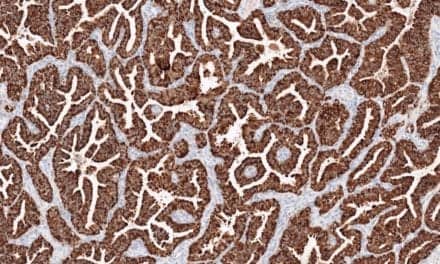Nonacus, a provider of genetic testing products for precision medicine and liquid biopsy, and the University of Birmingham in the United Kingdom have partnered to develop a non-invasive test for bladder cancer. The test, which is expected to be available by mid-2022, will use highly sensitive liquid biopsy technology developed by Nonacus, and a panel of biomarkers validated by Rik Bryan, MBChB, PhD, MRCS, and Douglas Ward, PhD, BSc, from the University’s Bladder Cancer Research Centre, to diagnose the disease from urine samples.
Bladder cancer is the seventh most common cancer in the developed world. In the UK, over 100,000 people a year are referred to hospital clinics that investigate for bladder cancer, usually after passing blood in their urine (hematuria). The first stage of investigation is usually cystoscopy, which involves inserting a camera into the bladder. Of these 100,000 patients, around 12% are subsequently diagnosed with bladder cancer, normally after a second invasive procedure to extract a biopsy.
“While blood visible in the urine should always be investigated, over 80% of people who have a cystoscopy at a hematuria clinic are diagnosed with non-malignant conditions or have no abnormality,” says Bryan, who serves as director of the Bladder Cancer Research Centre. “Unfortunately, the remaining 20% will need a further invasive procedure to confirm diagnosis. What is required is a highly sensitive and specific, non-invasive test that can rapidly determine those who need a biopsy and those who do not, and a urine test is the obvious place to start.”
While the ‘liquid biopsy’ approach is attractive, the low levels of tumor DNA in a background of DNA from normal tissues requires highly sensitive analytical techniques to obtain accurate results. However, researchers at the University started their work in the knowledge that Nonacus had successfully pioneered commercial non-invasive prenatal tests to identify low-levels of fetal DNA in maternal blood samples. Moreover, the company was developing methods to allow confident and sensitive calling of mutations from as little as 10ng of DNA.
The researchers used ‘deep sequencing’ of tumor DNA to identify mutations that are present in the majority of urothelial bladder cancers (UBCs). Their work, which was funded by Cancer Research UK and an MRC Confidence in Concept grant, involved sequencing 23 genes from tumor samples collected from 956 newly diagnosed, treatment-naïve patients. This deep sequencing of genes identified 451 unique mutations that were present in over 96% of tumors. The researchers also demonstrated that these mutations were identifiable in urine samples collected at the same time as tumor sampling.
As the researchers have shown, mutated DNA in a urine sample can be extracted from cancer cells shed into the urine from the lining of the urinary tract, or can be found as cell-free DNA fragments. However, extracting DNA from the cancer cells provides more reliable amounts of DNA for the test, especially when only small volumes of urine may be available. Coupling the mutation panel with the unique molecular identifiers and the proprietary target capture technology provided by the Nonacus Cell3 Target will, it is expected, provide a much more sensitive test than the existing PCR-based approach. The researchers are already working on validating this combination in a further 600 cases (including non-cancer cases) and they expect to publish data on sensitivity and specificity within six months.
Nonacus intends to launch the new bladder cancer test within 12 months, and the final product will include access to bioinformatics software to help with analysis. The company expects the test will provide high sensitivity for all stages and grades of disease, and will ensure the test is available worldwide to laboratories, hospitals, and clinics.
Promisingly, the original research also determined the influence of the mutations on cancer progression, time to recurrence, and overall and disease-specific survival in patients with non-muscle-invasive bladder cancer (NMIBC), and disease-specific survival in patients with muscle-invasive bladder cancer (MIBC), raising the possibility that the test could be used to stratify patients according to risk.
“We expect this partnership to deliver better care and outcomes for patients by reducing the number of invasive procedures, providing earlier diagnosis, and speeding up access to treatment for people with bladder cancer,” says Chris Sale, CEO of Nonacus.
Featured image: Bladder cancer seen under a microscope. Photo: Dreamstime





